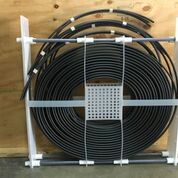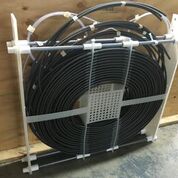
Heat exchangers are a fundamental part of so many different industries and are used for a wide variety of applications. The most common type of heat exchanger you might be familiar with is located in your engine: your car's radiator. Heat is transferred to the radiator by a liquid solution, which is then transferred to the surrounding air, ensuring the car doesn't overheat.
That is essentially what a heat exchanger is. It transfers heat from one matter to another to prevent overheating. There are many different types of heat exchangers. If you are in the market for a heat exchanger, you will find liquid to air exchangers, air to liquid exchangers, liquid to liquid exchangers, and air to air exchangers. The type of application will determine the type of heat exchanger required.
Now some applications may require ultrapure and aggressive chemical heating and cooling, which will need a specialized solution. Back in April, our team at Fluorotherm™ announced the launch of a new hybrid frame heat exchanger, which was designed for such applications where more efficient heat transfer is necessary.
We developed our new hybrid frame heat exchanger to address a growing problem that could occur with some applications involving chemical heating and cooling: particle build-up. When particle build-up occurs over time in the heat exchanger, it could cause serious damage to its surface, resulting in less efficient heat transfer. Particle build-up is caused by the chemical reactions that sometimes happen during metal treatment in mineral acids. When it does occur, it can be extremely difficult and expensive to repair.

Our new hybrid frame heat exchanger incorporates our many decades of experience in heat exchanger construction and design to mitigate the effects of chemical heating and cooling and maintain efficient heat transfer. The design eliminates any flat surfaces for salt to settle on. In addition to that, it also addresses the issue head-on by incorporating a lower surface energy material than plastic or alloy metal, reducing the changes of particle build-up in the first place. Its design also facilitates free and unrestricted fluid flow for better heat transfer too.
Heat exchangers are a pertinent part of many different industries, and we are proud to offer a new product that ensures maximum efficiency and performance for a wide variety of applications. Contact us today at 1-877-777-2629 to request a quote on this exciting new product.


